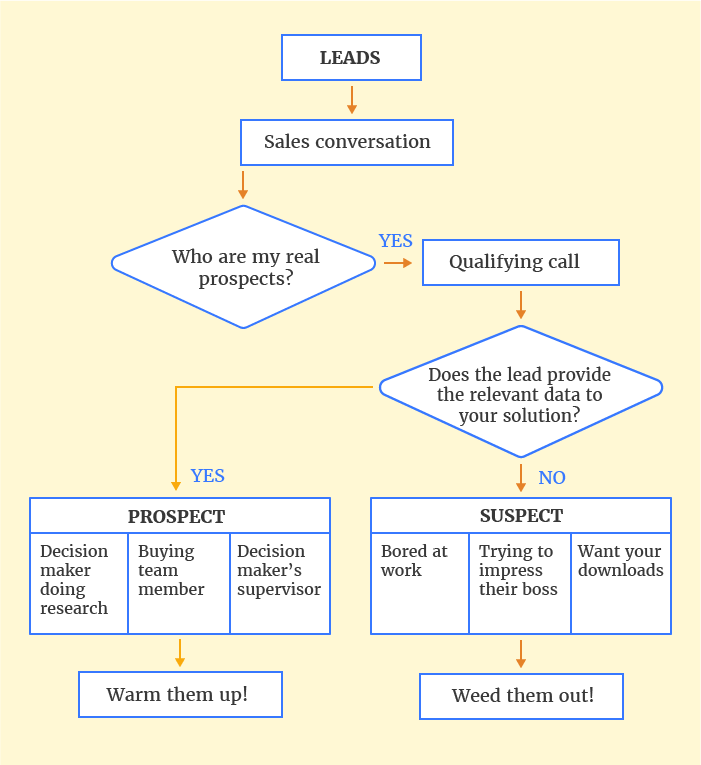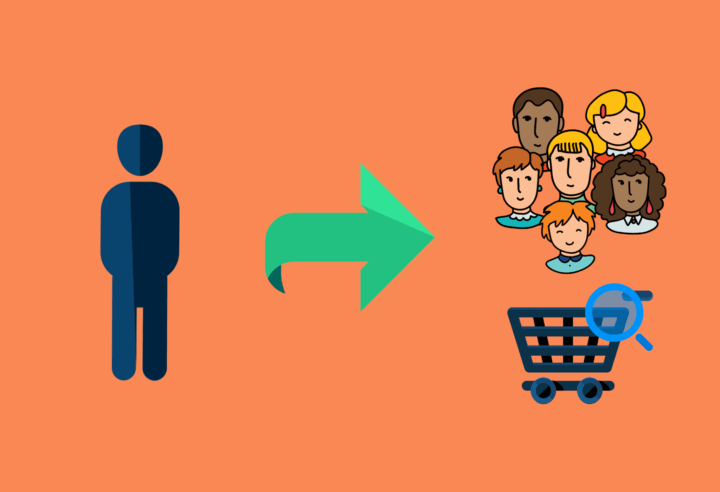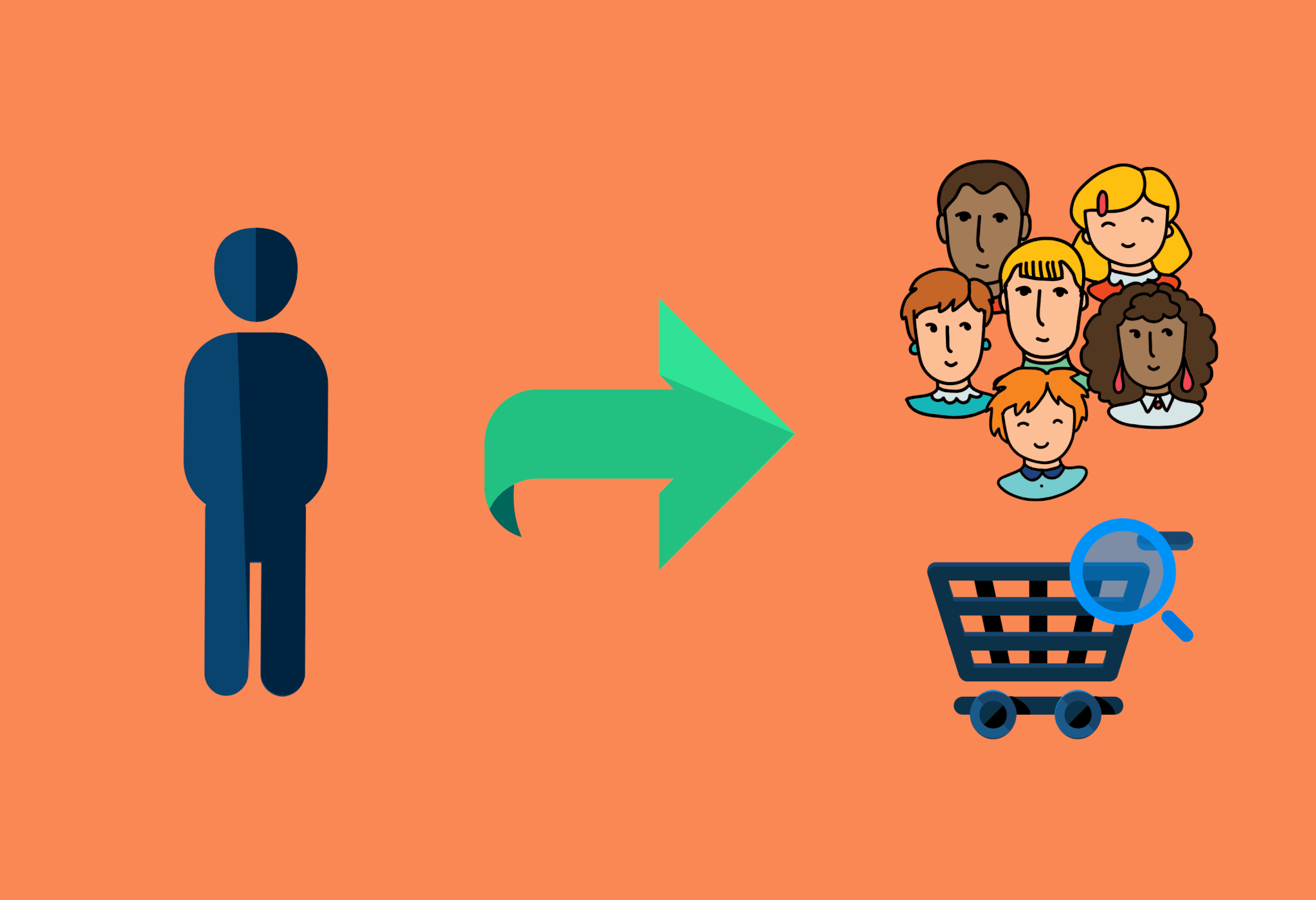Sales systems are intricate. If you are growing a business or building a team, you’ll eventually have to put processes in place that will sustain growth.
Instead of a couple of hardcore reps handling all elements of the sales process, you begin to add elements and team members that enhance your ability to sell. That said, it also increases the likelihood of confusion if you’re not careful.
Identifying roles and responsibilities is a crucial part of building a growth environment where marketing and sales work seamlessly together.
Part of the process is defining the stages of your funnel so clearly that every sales-facing person understands where each lead rests. This makes lead qualification easier to accomplish.
What Is A Marketing Qualified Lead?
The fine folks over at HubSpot define a marketing qualified lead (MQL) as a lead judged more likely to become a customer compared to other leads based on lead intelligence, often informed by closed-loop analytics.
In simpler terms, it’s any lead that demonstrates a certain level of interest in or engagement with your brand. That interest alerts the marketing team that the lead could become a customer.
Put another way, MQLs are those leads considered more likely to buy from you. These are people who have shown by how they engage with your content marketing that they are ready to talk to sales.
What level of interest or engagement should a regular lead show to qualify as an MQL, you ask? That depends on your metrics.
Measuring leads through lead scoring or even during the prospecting process will help you determine those that are likely to move down the funnel. Unfortunately, it’s different for everyone and takes some effort (which we’ll discuss further down).
From this point on, I will refer to a Marketing Qualified Lead as an MQL.
It’s important to note what an MQL is not.
Each MQL could be a suspect or prospect but is not a sales-qualified lead (SQL).
A person that has been thrown into your funnel via filling out a form, attending a webinar, or other means may not be interested in purchasing at all.
They are a suspect and need to be weeded out before wasting a sales call.
Prospects, on the other hand, are genuinely looking for a solution like the one you offer. Prospects should be measured, qualified and sent through to the sales team—once an MQL hits the criteria to be moved, they become an SQL.
The MQLs start as newly discovered leads that are entered into the funnel. They remain MQL’s until they are:
- Qualified for sales
- Sent to an email cadence (when they aren’t sales qualified after a period of time)
- Eventually taken out of the funnel
Depending on your sales process, this should shed some light on who you’re sending to sales.
This brings us to our next point:

Who is Responsible for Determining MQLs?
The glaring answer for larger organizations would be a generic one—Marketing. But don’t be so quick to say so.
Every business needs leads and not all of them are privy to an entire marketing department. If you are, great. Although, if sales aren’t a part of the (continuous) development of the qualification process, you’ll find the team in a bind eventually.
Highly qualified individuals separating good leads from bad and sending crack-shot sales reps the best candidates for a quick close is a fantasy without open communication between those doing the marketing and qualifying and those doing the closing.
Marketing is sales, and sales is marketing.
Black and white need to give way to a unified front of sales enablement for the best possible outcome.
Roles should be well-defined, but cooperation should be wide open.
With so many elements going into qualifying those in the funnel, it takes a village to create content that actually warms up leads.
Who knows the pain and common selling points better than those who are on the phones, making deals?
The main responsibility for tracking and identifying the MQL to SQL process (in most organizations) will belong to those in marketing. But those teams that fill the crack between marketing and sales oftentimes have the smoothest operation.
So, now we have a better idea of what they are and how they should be handled. Next up, let’s take a look at a few general ways and tips for filling your funnel with those looking for more information about your brand.
How Does A Lead Become Marketing Qualified?
A becomes qualified by the signals they send (or the actions they take) that they may be ready to buy. For example, they may attend a webinar, read a case study, join your email list, or – for the clearest sign – leave an item in their cart.
Each of the signals a lead sends to show they may now be ready to be passed over sales is given weight, which is known as a lead score. As you can imagine, one does not move swiftly from mere prospect to MQL.
Besides the signs a lead shows and the actions they take, to be deemed an MQL they must also:
- Afford your product or service,
- Have a genuine need for it, and
- Have the power to make the buying decision.
Taking someone from completely unaware to aware and then straight to a sales call doesn’t always work. You may be thinking, “Yeah, it’s why I’m reading this post.”
Depending on your sales process and how you acquire your leads, your lead qualification criteria could look very different from another organization’s.
You could get leads via a more web-focused “inbound marketing” strategy, a more direct sales environment, or (ideally) both. Let’s briefly discuss these:
Web-Focused Marketing Strategy
If you are primarily inbound (web-based marketing), your foundation for a robust lead qualification framework could include:
- High-quality content (using buyer personas)
- Attractive landing pages
- SEO Strategy
- Pay-per-click (Facebook, Adwords, LinkedIn)
- Email Focused Funnel
- Webinars/Videos
These are all things that get visitors to sign up and then draw them deeper and deeper. Meanwhile, you input the data into your CRM of choice and give them a lead score.
Direct Sales Strategy
Organizations that have a more direct contact, “hands-on” approach still have to set up the processes that leads will be ushered through.
The first step in an environment like this would be finding high-quality potential candidates to start with.
If your organization directly finds your own leads via a purchased list or self-created one, you can benefit greatly from narrowing the field of leads to those who are most likely to move down the funnel.
You still have MQLs, but the content and approach may be different and more aggressive. There is usually one plan. Each lead goes through a cold email/cold-calling schedule to get someone to respond/answer.
Again, a mix of both strategies is ideal.
What is The Difference Between A Sales Accepted Lead and a Marketing Qualified Lead?
A sales accepted lead is an MQL that the sales department has deemed truly ready to be sold to. That’s what distinguishes them. In other words, they are confident about closing a sale. At this point, the lead is seamlessly passed over to sales.
In an ideal setup, the marketing department does not qualify and pass over to sales a lead they have not thoroughly vetted and determined the sales team can successfully sell to. So the sales department’s qualification or acceptance of a lead becomes a formality.
Figuring out when a lead has run their course through the marketing material and has come closer to making a decision is different from one business to another.
The best way to explain when a lead is ready to hit the sales floor is to get them to “talk”:
Getting a Hand Raise
You want to talk with the lead and you want them to talk with you. This happens either through cold outreach via email/calls or getting leads to interact with you first.
Getting leads to raise their hands by finding you organically, or through an ad is a great way to start a conversation. This can get them into your funnel, but it can also alert you that they are ready for a sales call.
Example: Joe comes to your website via a friend that sent him one of your blog posts. He signs up for your list due to your incredible lead magnet.
After several days, your email sequence invites Joe to a pre-recorded webinar explaining how he can XYZ (which your product does wonderfully). He enrolls and watches it and responds to the call to download the resource at the end.
Joe has raised his hand IF many of the people who watch the said webinar and download the bonus resource become paying customers.
Ask Them If They’re Qualified
If you’re selling big contracts, it takes getting on the phone or meeting in person.
Smaller ticket items can be sold via a webinar and even directly from web copy, but if your products take reps to sell them—it means having conversations.
Yes, SDRs talking to sales-qualified leads is the end game. However, you may want to have a chat even before going in for the close.
Mapping calls, discovery calls, and fit calls are great ways to determine exactly how close a lead is to buying.
Example: Say you have 100 brands on a list. It’s likely that 10-20 are willing to hear about a potential replacement solution and 3-5 may even actively be looking (all relative numbers).
The best (and possibly only) way to know if they are ready for a sales conversation—is to have a conversation. That means asking them questions, figuring out if they are a fit for your process, and sensing if the timing is right.
Aggressive? Yep.
Effective? You betcha.
Figure Out Your Indicators
For leads in a longer buying cycle funnel, you’ll have to determine which indicators signify that a particular lead is ready to talk. We admit to simplifying it by saying it’s equivalent to them “raising a hand”, but it’s not that far from the truth.
You just have to determine when the hand is raised and what indicators show they are ready for a chat with a rep.
If your funnel is young; it will take some trial, error, and communication with the sales team. Get their feedback as to who is buying and who is not. Make them privy to the entire process and get their valuable insight on what questions leads have when they get them on the phone.
Use the intel to find better prospects, increase the number of sign-ups, keep better track of the process, and move more leads down the funnel.
What Is The Difference Between A Lead And A Marketing Qualified Lead?
A lead is a prospect that has the potential to become a future customer. They graduate to a marketing-qualified lead after they have shown by how they engage with your marketing initiatives that they are closer to making a purchase. The two differ in that one shows potential and the other, readiness to become a customer.
MQLs themselves can be warm or hot, with the latter considered the more likely to make a purchase. So knowing when to pass your MQLs to sales is crucial. Too soon and they may not be ready and will pull back, and too late and they will lose interest in the purchase.
Now that you know what a marketing-qualified lead is and how to qualify one, you can make better decisions about your led nurturing. The result of this should be hotter MQLs for your sales teams to close.
Want to help contribute to future articles? Have data-backed and tactical advice to share? I’d love to hear from you!
We have over 60,000 monthly readers that would love to see it! Contact us and let's discuss your ideas!

